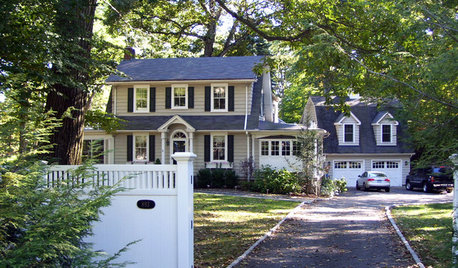increase habit
deluxemoonpie
10 years ago
Related Stories

HOMES AROUND THE WORLDHousehold Habits and Customs to Borrow From Other Countries
Discover why salt may be the perfect house-warming gift, how to clean rugs in snow and why you should invest in a pair of ‘toilet slippers’
Full Story
HEALTHY HOME6 Tips From a Nearly Zero-Waste Home
Lower your trash output and increase your quality of life with these ideas from a mom who did it to the max
Full Story
VACATION HOMESPatience Pays Off for Owners Renovating Their Beach Condo
A Jersey Shore unit gets a bright new look, a more functional layout and increased space for extended family
Full Story
MOST POPULARWhat to Know About Adding a Deck
Want to increase your living space outside? Learn the requirements, costs and other considerations for building a deck
Full Story
DECORATING GUIDESHow to Love Your Kitchen More, Right Now
Make small changes to increase the joy in your kitchen while you cook and bake, without shelling out lots of dough
Full Story
COLOROrange for Fun — and Yes, Versatility — Around the House
It may never be the new black in anything but prison shows, but orange can dramatically increase your home's energy level
Full Story
LIFE10 Strategies for Mastering Your Morning Routine
Conquer the habit of running late with these ideas for getting yourself — and your family — out the door on time
Full Story
HOME OFFICESHome Setups That Serve You: Designing the Office
Arrange an organized workspace that suits your habits, and watch the rest of your home become more streamlined
Full Story
REMODELING GUIDESDesign Workshop: Is an In-Law Unit Right for Your Property?
ADUs can alleviate suburban sprawl, add rental income for homeowners, create affordable housing and much more
Full Story
TRADITIONAL ARCHITECTURERoots of Style: Dutch Colonial Homes Settle on the Gambrel Roof
Colonists from the Netherlands brought the gambrel roof and other quaint details. Has your home adapted any of these features?
Full Story






dementieva
deluxemoonpieOriginal Author
Related Professionals
New Mexico Landscape Architects & Landscape Designers · Roxbury Crossing Landscape Architects & Landscape Designers · Berkeley Heights Landscape Contractors · Gloucester Landscape Contractors · Lakewood Landscape Contractors · Las Vegas Landscape Contractors · North Canton Landscape Contractors · Tuscaloosa Landscape Contractors · University City Landscape Contractors · Watertown Landscape Contractors · Norfolk General Contractors · Orangevale General Contractors · Rowland Heights General Contractors · Woodland General Contractors · Avocado Heights General Contractorswildbirds
deluxemoonpieOriginal Author
dementieva
darobi2459
Ed
weedyseedy
weedyseedy
swontgirl_z5a
deluxemoonpieOriginal Author
Ed
swontgirl_z5a